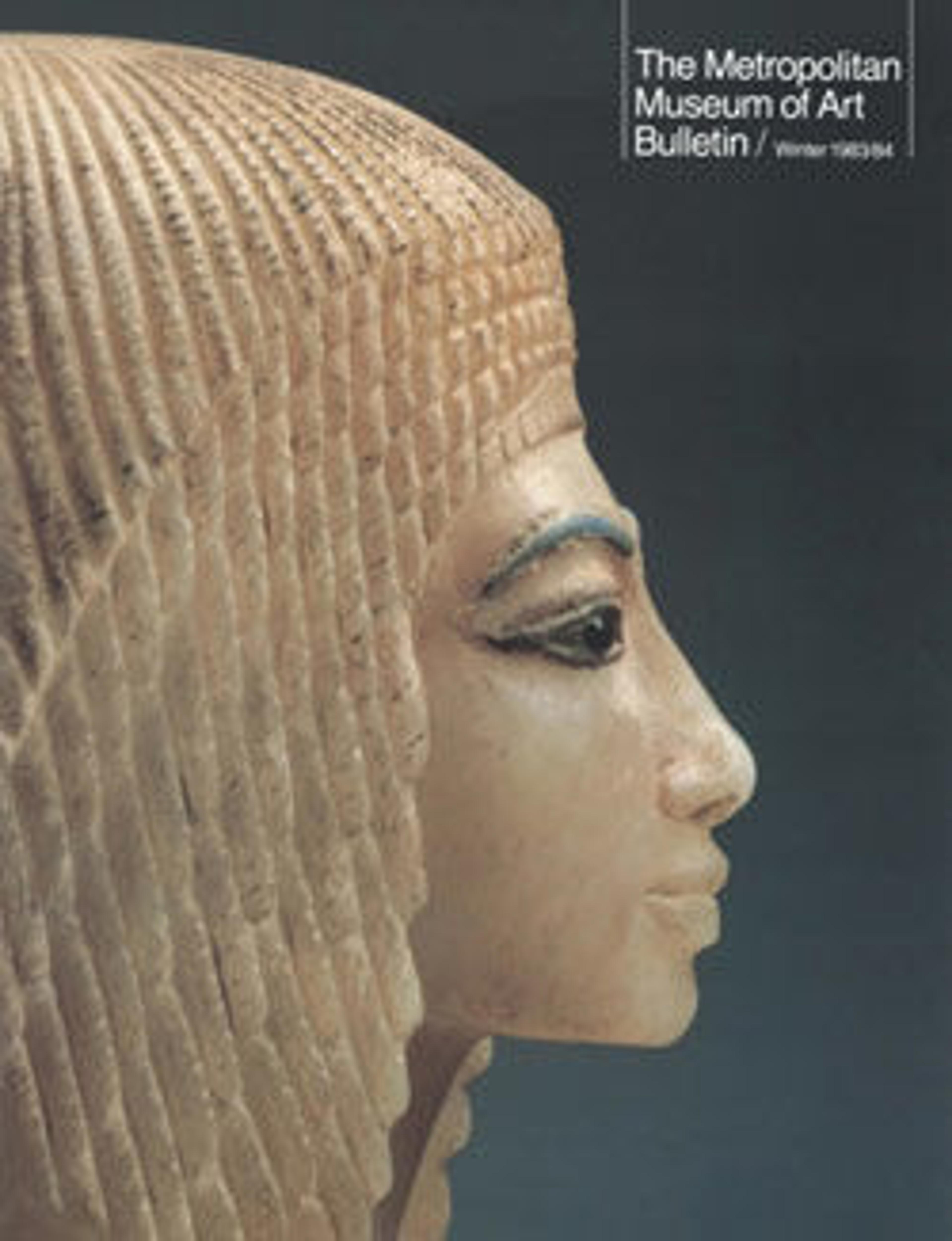Head end of the outer coffin box of Pakherenkhonsu
The coffin set of the Doorkeeper of the House of Amun, Pakherenkhonsu, consisting of inner, middle, and outer coffins, all enclosing a cartonnage case, was found in pieces in Pit 1 of Tomb MMA 832. This curved wooden panel formed the head end of the outer anthropoid coffin.
On the exterior, the goddess of the West (the land of the dead, where the sun set and the dead were buried) spreads her winged arms to embrace the head of Pakherenkhonsu's mummy. Below, a band of stylized narrow niches or doorways, a traditional architectural motif, marks the box as the deceased's final home.
Inside, the god Sokar appears in his golden barque beneath a winged sundisk. The outstretched arm and the name of Isis appears to viewer right, all that is left of a figure of this goddess; a similar figure of her sister Nephthys was to the left. These goddesses were there to protect Sokar in his barque and by extension to guard the body of Pakherenkhonsu.
The figures are drawn with authority, in the precise, linear style of painting favored at Thebes in the seventh century B.C. The color, carefully applied within the outlines, is subordinate to the drawing; even the unearthly green of the goddess Amentet's skin seems subdued in comparison to the complicated branches of her elaborately drawn ear. It is noteworthy that Pekherenkhonsu, a fairly minor official, was able to command such fine work for his funerary equipment.
On the exterior, the goddess of the West (the land of the dead, where the sun set and the dead were buried) spreads her winged arms to embrace the head of Pakherenkhonsu's mummy. Below, a band of stylized narrow niches or doorways, a traditional architectural motif, marks the box as the deceased's final home.
Inside, the god Sokar appears in his golden barque beneath a winged sundisk. The outstretched arm and the name of Isis appears to viewer right, all that is left of a figure of this goddess; a similar figure of her sister Nephthys was to the left. These goddesses were there to protect Sokar in his barque and by extension to guard the body of Pakherenkhonsu.
The figures are drawn with authority, in the precise, linear style of painting favored at Thebes in the seventh century B.C. The color, carefully applied within the outlines, is subordinate to the drawing; even the unearthly green of the goddess Amentet's skin seems subdued in comparison to the complicated branches of her elaborately drawn ear. It is noteworthy that Pekherenkhonsu, a fairly minor official, was able to command such fine work for his funerary equipment.
Artwork Details
- Title:Head end of the outer coffin box of Pakherenkhonsu
- Period:Third Intermediate Period
- Dynasty:Dynasty 25 (Kushite)
- Date:ca. 750–700 B.C.
- Geography:From Egypt, Upper Egypt, Thebes, el-Khokha, Tomb MMA 832 (H 3), Pit 1, Burial of Pakherenkhonsu, MMA excavations, 1914–15
- Medium:Wood, paste, paint
- Dimensions:H. 57 × W. 65 × D. 23 cm (22 7/16 × 25 9/16 × 9 1/16 in.)
- Credit Line:Rogers Fund, 1928
- Object Number:28.3.53
- Curatorial Department: Egyptian Art
More Artwork
Research Resources
The Met provides unparalleled resources for research and welcomes an international community of students and scholars. The Met's Open Access API is where creators and researchers can connect to the The Met collection. Open Access data and public domain images are available for unrestricted commercial and noncommercial use without permission or fee.
To request images under copyright and other restrictions, please use this Image Request form.
Feedback
We continue to research and examine historical and cultural context for objects in The Met collection. If you have comments or questions about this object record, please contact us using the form below. The Museum looks forward to receiving your comments.
